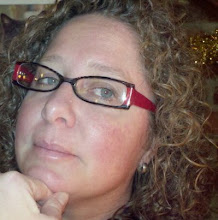


Philadelphia University’s College of Design + Engineering + Commerce
Reflecting on our development efforts to date (2008-2011). This is a summary of the current state of conceptual development and rationale for building this new college.
Rationale
Philadelphia University’s College of Design, Engineering and Commerce (DEC) brings the multiple disciplines of design, engineering, and business into an innovative, integrated educational experience that will prepare students with multidimensional understandings that they will need to be successful in their rapidly evolving fields of choice.
Integrated Thinking for a Volatile, Uncertain, Complex, and Ambiguous (VUCA) World
Historically, recent graduates followed a trajectory of career trajectory from roles focused on tasks and execution to management roles to holistic and strategic vision. The time frame from task-based skills to management was nearly a decade as was the next career move to strategic leadership.
Many students will enter jobs that did not exist when they began their education. These students will need process-based skills that are portable to future challenges not yet known. Students also need to develop perspectives that allow them to view their futures on a continuum that includes “white spaces” where new fields may emerge as a result of social, political, environmental, economic, and technological forces. A notable example is social media, the emergence of which has led to the transformation and democratization of branding and product development.
Most efforts at the undergraduate level focus on post-skill acquisition collaborations at the junior and senior levels of study. This delay and lack of preparedness results in gaps in knowledge, understanding, and expectations that can lead to, at best, silo coordination of functions as opposed to integration of discipline and discipline processes.
CURRICULUM OVERVIEW: PROCESS, FRAMEWORKS, METHODS, SYSTEMS
A more holistic view of the rapidly changing environments in which graduates will navigate requires an emphasis on dealing with ambiguity with skills around research, synthesis, problem finding, problem framing, ideation, and iteration. As a result, the DEC Curriculum has a core framework common to all of the 18 disciplines in the college. The core framework is designed as connective tissue to bridge the gaps and to establish discipline-neutral yet integral language to foster transdisciplinary collaborations.
Students will first take the Design Process + Integrative Thinking course that introduces them to process with an emphasis on dealing with ambiguity, problem finding and framing with a high value placed on prototyping and iteration. The next course in the sequence is Business Models with an emphasis in thinking on frameworks of how organizations operate with a range of context from corporate to non-profit to government entities. This is followed by a course in research methods with an emphasis on the role of ethnography in innovation. The final course in the sequence is systems thinking with an emphasis on natural systems in biomimicry and industrial ecologies in sustainability.
While navigating the core framework students will be grounded in traditional liberal arts study as well as their professional discipline courses. Throughout their university education they will take collaborative courses that link disciplines such as product development, branding, and entrepreneurial thinking. Most projects are ‘real world’ with substantial industry engagement and sponsorship.
More Information:
Slide Share Presentation: http://www.slideshare.net/hmcgowan/college-of-design-engineering-commerce
DEC Website: http://www.philau.edu/strategicinitiatives/dec.htm
Early DEC Model of Curriculum Intersections (Flash): http://www.philau.edu/strategicinitiatives/flash/DEC.Integrated.Model.swf
Credit
Heather McGowan wrote this summarized article with substantial contributions from the following co-authors at Philadelphia University
Gwynne Keathley, Vice Provost
Steve Spinelli, PhD, President
Randy Swearer, PhD, Provost
DR Widder, Executive Director of Innovation







